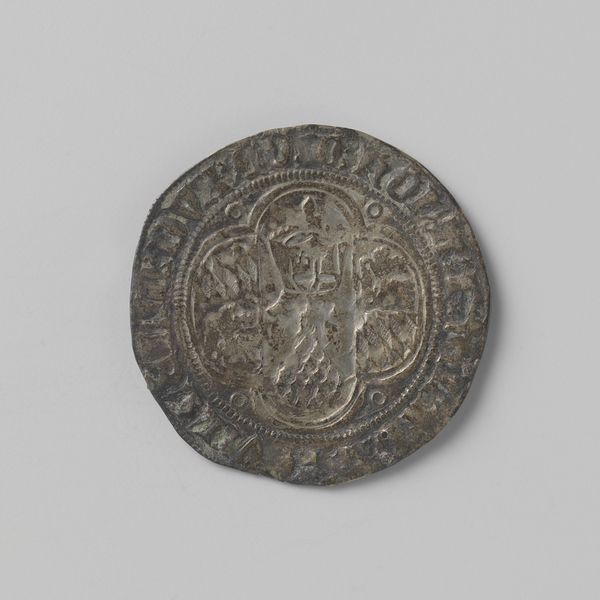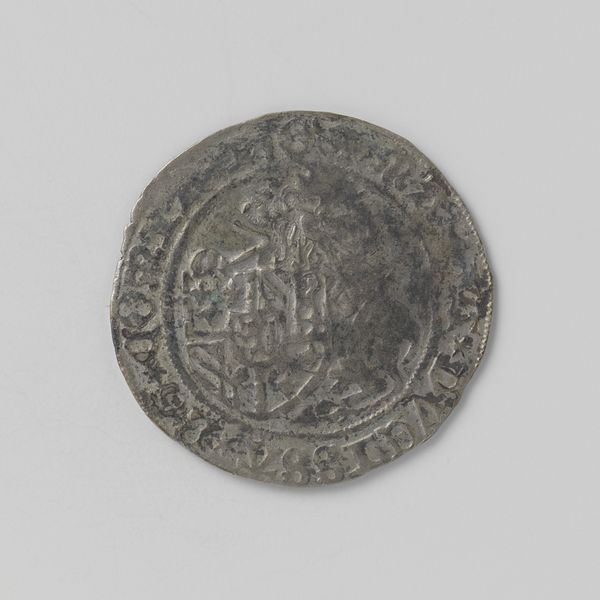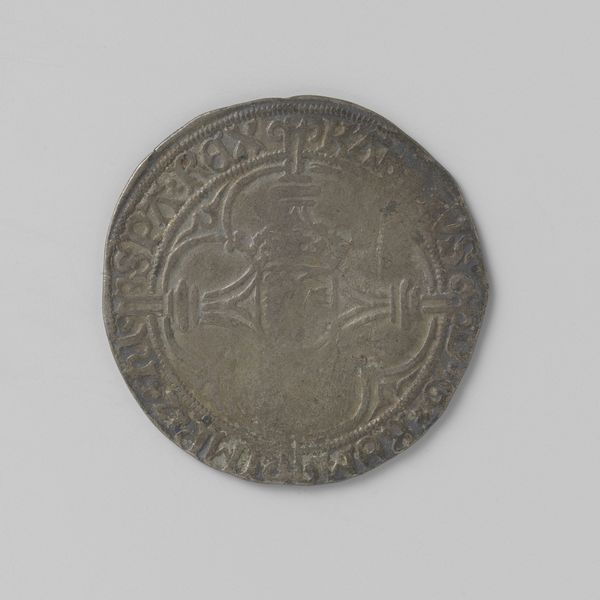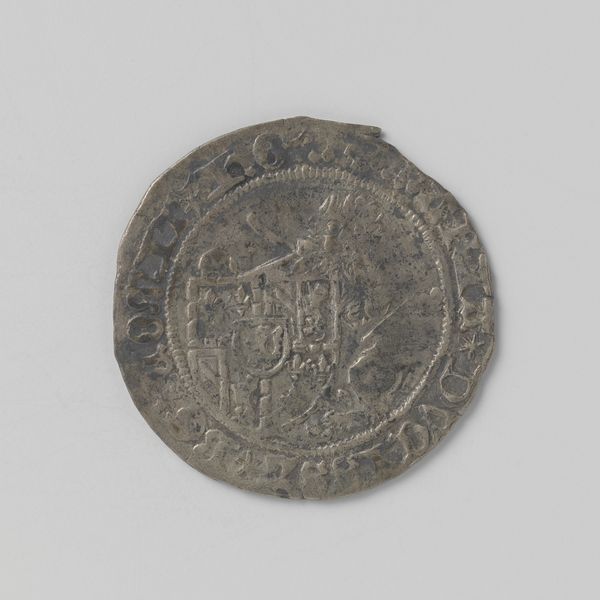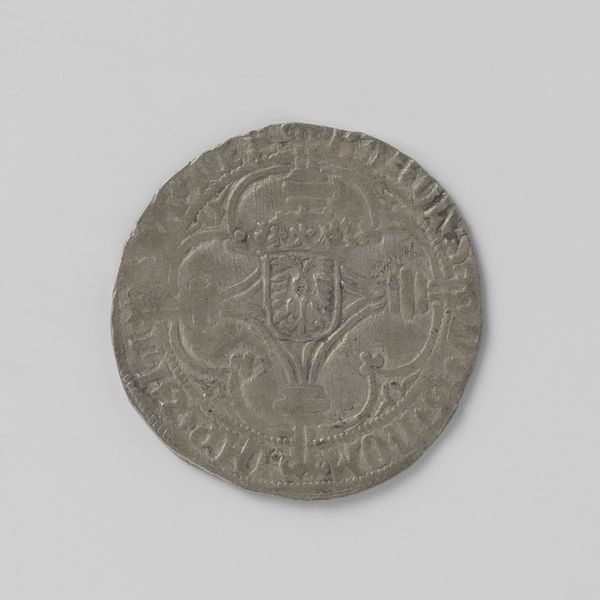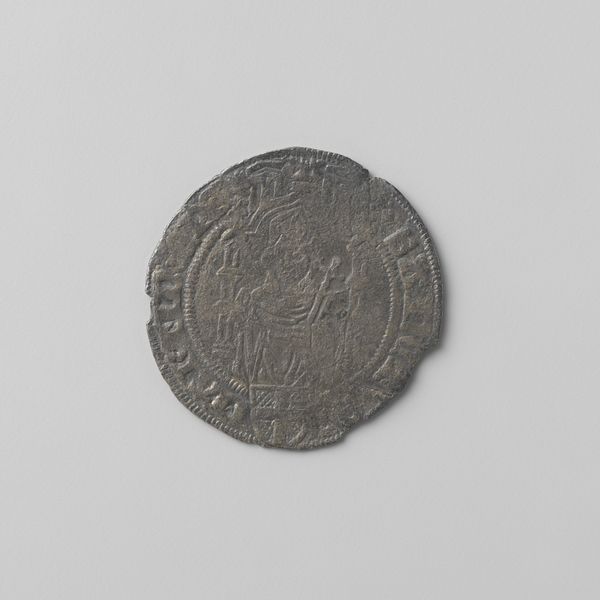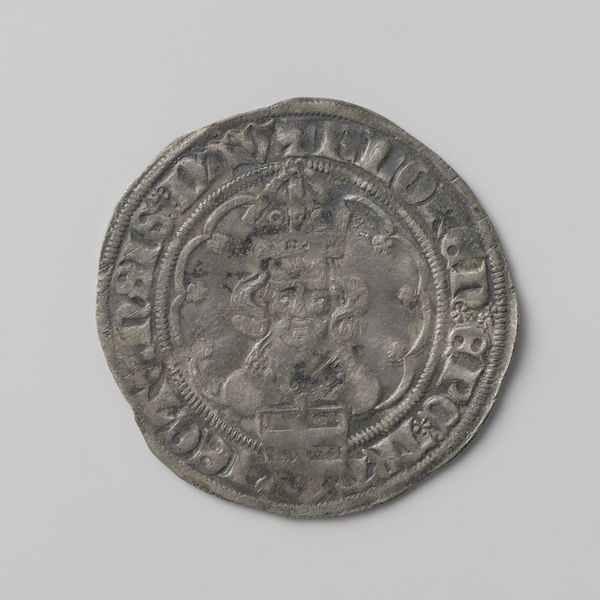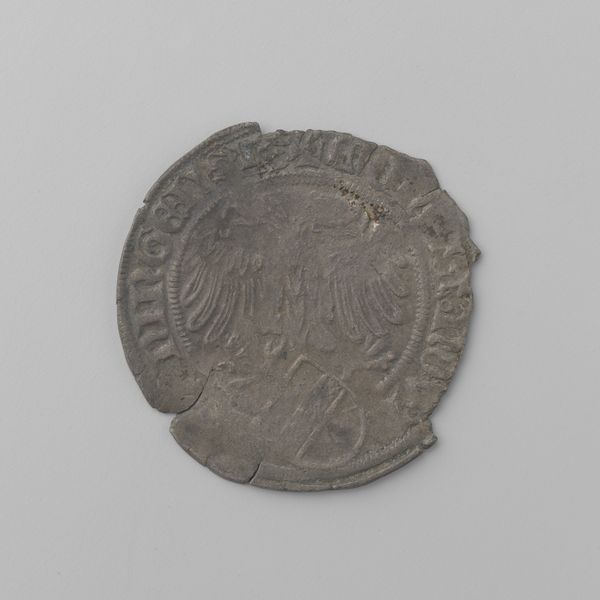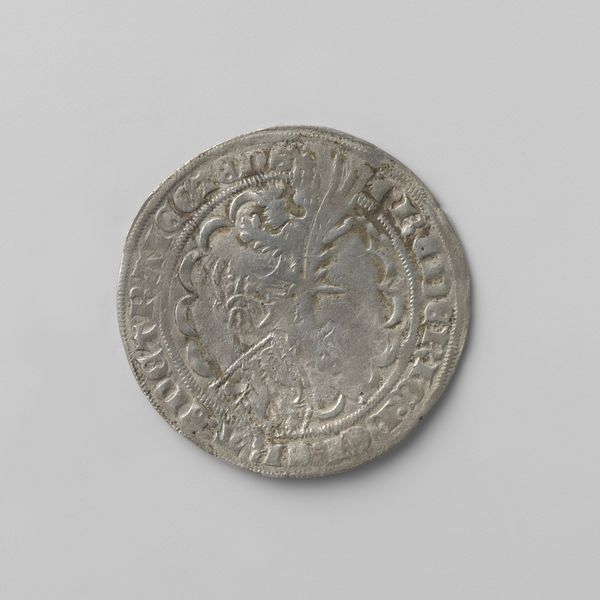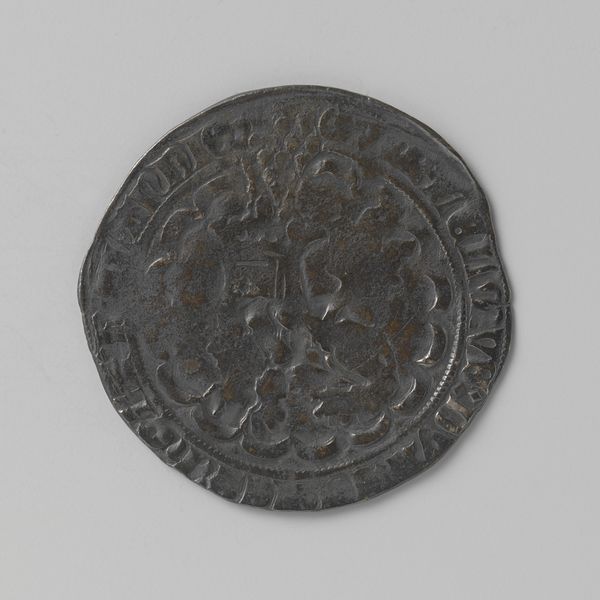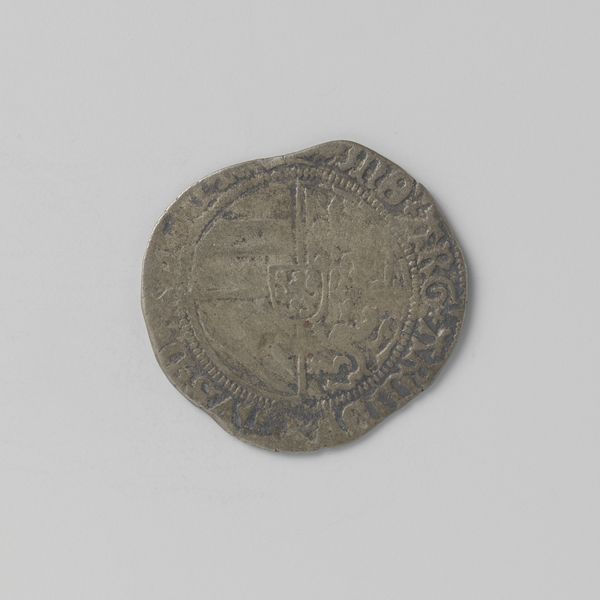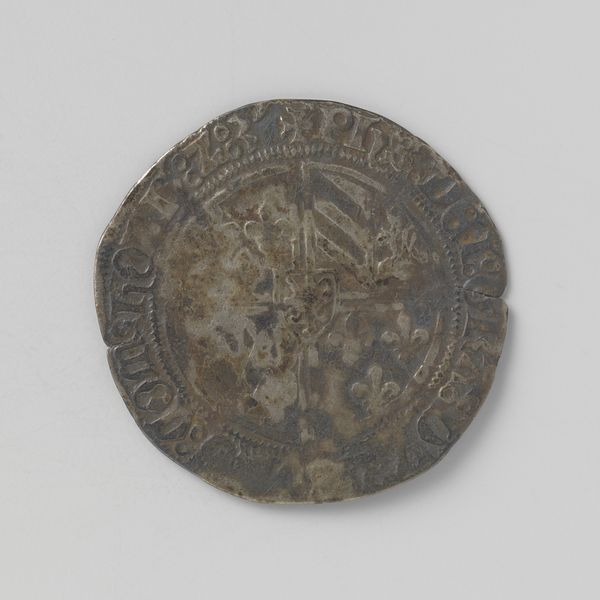
Tourse groot uit Gulik-Berg van Willem II, 1360-1408 1337 - 1345
0:00
0:00
metal, relief, engraving
#
portrait
#
medieval
#
metal
#
relief
#
coin
#
engraving
Dimensions: diameter 2.5 cm, weight 2.64 gr
Copyright: Rijks Museum: Open Domain
Curator: Before us, we have a “Groot” coin dating back to 1337-1345, attributed to Willem IV, Count of Holland, and belonging to the collection of the Rijksmuseum. The engraving on metal offers insight into the medieval period’s economic and social structures. What strikes you first about it? Editor: It looks worn, doesn’t it? Not just from age, but as if it’s been passed through many hands, each leaving a trace. I'm thinking about the countless transactions this little piece facilitated, and how much labor it represents in terms of its value. Curator: Indeed. As a symbol, this coin isn’t merely a denomination of value. It stands as a testament to Willem IV’s power, visually reinforcing his authority across the region during the late medieval period. This authority extends into realms of culture, identity, and deeply ingrained systems of trade. The engraving almost serves as a medieval propaganda, in a way. Editor: Propaganda? I see your point, especially considering how controlled metal production and coinage were. Who were the engravers, I wonder? We have the name of the person in power stamped on the face, but we have no idea who actually created this item or how much their labor was valued. Was the material mined locally, or traded from further afield? Curator: Those are incredibly important questions. Understanding the economic reality through gender and racialized lenses allows us to appreciate how these systems often suppressed certain groups of people in society. In that regard, the coin shows a legacy of imbalanced systems, even today. Editor: Absolutely. Considering the medium—metal—it underscores the literal weight of value, which speaks to a lot about trade relationships and even class. Coins like this moved value from mining, production, design and trade, becoming the pocket change of merchants, workers and aristocrats. It represents the cycle of use. Curator: Reflecting on its symbolism alongside its economic implications adds layers to its understanding. It encourages us to reflect on those historical systems and how they still manifest today. Editor: It's humbling to consider the amount of work in this coin—from extraction, refinement and engraving through daily circulation—all captured within this small token.
Comments
No comments
Be the first to comment and join the conversation on the ultimate creative platform.
